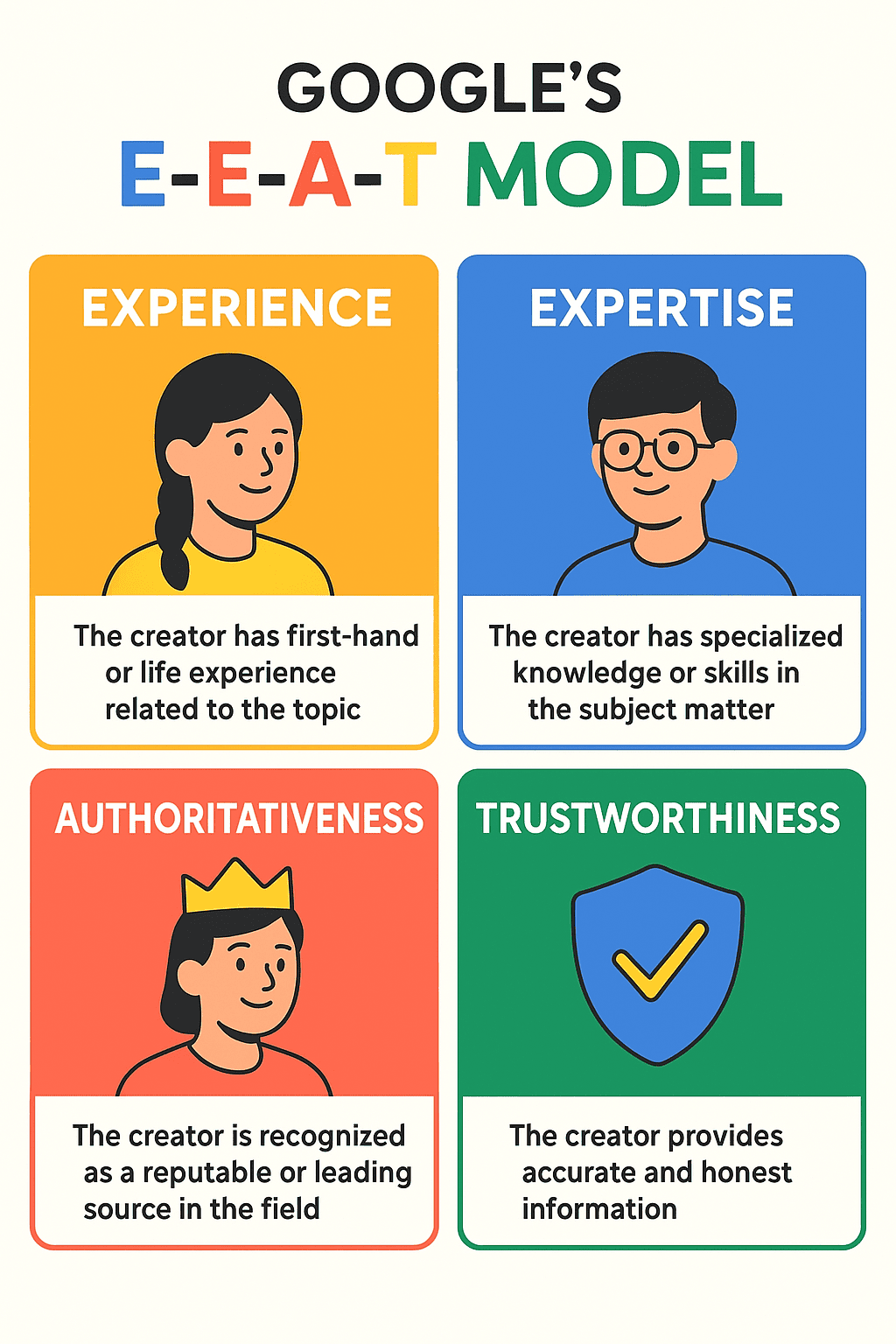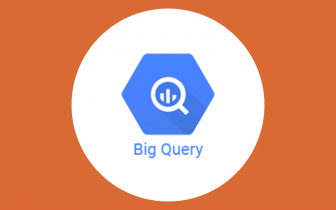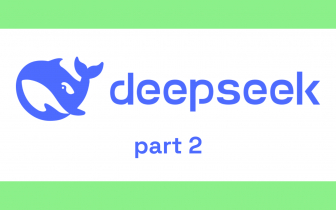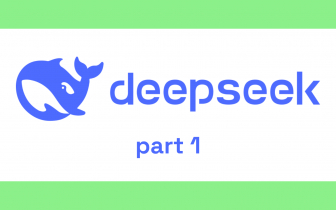Is SEO Dead with the Rise of AI-Generated Content?

Increasingly more often, we hear that search engine optimization is becoming obsolete. You’ll even hear forecasts that by the end of 2025, tuning content for AI systems like ChatGPT, Claude, and DeepSeek will eclipse traditional SEO.
Are these just empty words and unfounded claims born of an AI bubble, or do they have some solid evidence? Is SEO dying, indeed, with its end arriving in a year or two at most?
Join us on an inquisitive journey as we uncover the truth, examine the arguments on both sides, and bust the most popular myths along the way.
SEO’s evolution in the AI era
Any radical claims like SEO is dead, or it will be here to stay with us forever, are certainly intriguing, but they share more in common with technological populism than with rigorous analysis.
A more constructive approach is to view the latest events around AI and SEO as evolution: how modern AI reshapes the search landscape — and, crucially, is SEO still relevant in that new reality?
How AI reshapes search behavior and intent
Remember when search meant blue links on a blank page? AI buried that era. Today’s results read more like tailored answers than ranked lists.
As engines grow conversational, they weigh context over sheer keyword volume. That’s how SEO is changing: relevance is measured by whether a reply feels native to a user’s question path.
Today, marketers need fresh instincts more than ever. Ranking for a single phrase is giving way to covering a web of semantically linked topics. The goal is to meet intent at each micro-moment, whether it’s a quick product check or a deep dive into a complex topic that requires facts and fresh perspectives.
You’ll see these shifts reflected in the very way search results appear and behave:
- Voice queries have gone natural: 80% of users speak full, conversational sentences into smart assistants.
- Featured answer boxes at the top of the page grab attention and often get clicked before any other link.
- AI chat panels deliver answers faster than scrolling, a convenience that’s helped ChatGPT reach 300 million weekly users globally.
- Visual snippets drive clicks: Custom thumbnails, which now sit alongside text results, boost video CTR by 30%.
- Your personal history and device data influence which pages search engines recommend to you.
Scope, context, and speed now matter more than raw keyword density. Successful teams watch real-time query trends, plug gaps with concise explanations, and weave user signals straight into content updates.
When done right, your pages feel less like static documents and more like conversation starters.
Search won’t stop evolving, but it’s still grounded in clear information. If you respect that user focus — and let AI streamline discovery — you’ll greet the future being much more prepared.
Generative-engine optimization: the rising challenge to traditional SEO
At the forefront of AI-driven transformation stands a new challenger to SEO: GEO (Generative Language Optimization).
A recent survey (May 2025) involving 1,040 U.S. adults from all fifty states found that 62% of people use an AI chatbot every day. On top of that, 49% of respondents believe chatbots will eventually replace search engines.
Source: Exploding Topics
This new GEO focuses on how large language models select, blend, and present information in chat-style answers. Instead of ranking pages alone, it tries to earn placement inside the answer itself — what many call “position zero on steroids.” That means feeding engines data that’s already structured, clear, and ready to quote.
Just to be clear and stress this enough: traditional SEO still matters, but GEO tightens the spotlight on context, authority, freshness, and entities (e.g., names, brands, and places).
If your facts are outdated or your claims lack proof, a model can swap you out for a rival source in seconds. The reward for precision is huge: your brand’s words echo through millions of instant responses.
Key content traits that win GEO's attention include:
- Short declarative statements backed by sources.
- Schema markup in all content, applied to all tables and lists.
- Up-to-date stats, and not just the last couple of years, but dated within the current year.
- Each post comes with a clear author bio plus credentials shown.
- Consistent terminology and entity info applied across related topics.
Preparing for GEO begins with updating your brand tone and particularly the consistency of entity information, i.e., your brand name, location, and any other credentials. Literally every chapter and every paragraph must follow the same brand voice.
A good test: can a reader copy one paragraph and paste it as a complete, stand-alone answer?
Next, carefully audit all your pages. Look for data that can be distilled into bite-sized facts, then add structured markup, so engines can “understand” it cleanly.
The bottom line is that GEO won’t replace SEO tomorrow, but the brands that blend both today will own the answers of the near future.
Debunking the top myths about SEO’s demise
Behind the sentiments about SEO's soon-to-be demise lie several myths. Let’s briefly review them and see if we can debunk them with logic and facts, and give you some actionable advice on how to avoid letting these myths tie up your productivity.
Myth #1: AI content ranks higher than human-written content
Three years ago, the biggest fear of the content marketing community was over how robots would take over human jobs. One year into the ChatGPT madness, there were already multiple reports of how AI content outperformed human-made content in search results.
That buzz still hangs in the air, and marketers keep asking, “Will SEO die if bots flood the web?”
Yet Google keeps refining its systems to reward clarity, relevance, and genuine expertise. Bots can churn words, and they even do it masterfully, with eloquence that surpasses the one seen in experienced human writers.
Source: Digital Information World
However, even the latest language models by OpenAI and Anthropic can’t fake real insight or solve a reader’s unique problem with lived experience.
Here’s the evidence that this myth doesn’t hold up:
- Manual reviewers flag thin AI pages that recycle web clichés. One study by Search Quality Raters found 75% of pure-AI drafts rated “low helpfulness” by human evaluators.
- Even the AI-made scientific papers are being increasingly rejected by human scientific committees due to their low value
- In 2025, Google will penalize mass-produced machine text lacking originality and depth.
- User dwell time drops sharply on generic, auto-spun articles and guides.
- Top-ranking posts still feature author bios, citing hands-on research or data.
- Backlink audits reveal editors are reluctant to link to machine-generated content.
Algorithms also watch how people interact with a page. If visitors bounce because the wording feels lifeless, rankings slide, no matter how “optimized” the prompt.
Conversely, a concise, opinion-backed paragraph from a field expert often hits rich-snippet territory.
The key question then becomes — What can you do under these circumstances?
Instead of fearing AI, blend it with your voice. Let large language models draft outlines, then inject personal stories, fresh data, and tactical advice. Google rewards depth and usefulness, so the human touch becomes your ranking edge.
Pro tip: Use AI to draft ideas, then refine with personal anecdotes and concrete examples.
Bottom line: AI can help scale, but it’s no silver bullet. Treat it as a co-writer, not a replacement, and your content stays competitive long after the hype fades.
Myth #2: Keywords no longer matter in an AI world
Signs of this myth are everywhere online, and their volume seems to grow exponentially. Scroll LinkedIn for five minutes, and you’ll see a post shouting, “Keywords are dead!” Skeptics reply, “Does SEO work without them?”
Let’s test that claim against measurable trends.
AI language processing means Google grasps context better, yet even machine comprehension begins with discrete terms. Try removing those terms, and you’ll starve the system of hints. Many vital metrics will be affected: relevance scores will dip, impressions will fade, and conversions will lag.
Here’s why the “keywords don’t matter” belief falls apart:
- Google still maps intent to keyword patterns in ranking decisions.
- Query refinements rely on synonyms, but the core keywords still play a big role.
- Product review guidelines continue to stress using buyer keywords such as “best” and “cheap.”
- Featured snippets highlight exact-match phrasing for clarity and confidence online.
- Internal search logs show users typing separate words and phrases, not only broad topics and perfectly refined queries.
The recipe for staying immune to this myth and its proponents is simple: research how users phrase goals and pain points, then weave those phrases naturally into your headings and lists.
Additionally, sprinkle industry synonyms to catch edge cases without diluting your main focus.
Pro tip: Embed target keywords naturally in image alt text and captions for extra signals.
Source: Need Momentum
Keywords haven’t vanished; they’ve matured alongside AI. Use them as precision tools, and your content stays laser-targeted, withstanding at least several upgrades to the current search algorithms.
Myth #3: SEO is purely technical — content quality doesn’t count
It’s tempting to think search engine optimization lives and dies on page-speed audits and schema markup.
Yet Backlinko’s 2025 study of 11.8 million Google results found no statistically significant correlation between load speed and first-page rankings.
Google’s own data underscores the point. When its March 2024 core update finished rolling out, the company announced that search now surfaces 45% less low-quality, unoriginal content than before — an improvement driven by usefulness signals, not flawless code.
Modern algorithms study real behavior signals, not just code perfection. A page can validate flawlessly and still slip if readers feel underwhelmed.
For what it’s worth, quality writing makes visitors scroll, comment, and share — feeding endless positive feedback loops.
This is why “technical-only SEO” is a myth:
- Google core updates reward unique insights, not generic scraped material.
- Case studies show that dwell time increases on articles with actionable examples.
- Link builders favor posts offering fresh research over placeholder text.
- User surveys cite clarity and depth as reasons for revisiting a site.
- SERP features highlight passages answering queries in clear conversational language.
Sure, when you fix broken links and compress images, your content’s baseline health will improve. Yet the turning point comes when a piece solves problems better than competitors. That’s when organic growth feels almost automatic.
Therefore, bake quality improvement into every sprint. Pair engineers with writers; measure both Core Web Vitals and content freshness. That collaboration fuels sustainable growth beyond any single algorithm tweak.
Pro tip: Incorporate multimedia elements like videos or infographics to enrich the reader experience.
Modern SEO tactics in an AI-driven world
Let’s now dive deeper into the practicalities of staying SEO competitive in a world dominated by smart search algorithms, where generative AI becomes an everyday friend and business assistant.
Ensuring quality, guidelines, and E-A-T in AI-generated content
Large language models (like ChatGPT and Perplexity) can draft a serviceable blog post in seconds. That doesn’t mean the post will pass Google’s quality filters or win reader trust. You still have to check every line for clarity, engagement, and experience.
First, treat the AI output as a rough outline. Add real examples, data, and citations that only a human expert can supply. Those inserts raise the page’s Experience, Expertise, Authoritativeness, and Trustworthiness ( E-E-A-T).

Here is a complete quality checklist:
- Verify every fact with reliable primary sources (check every link to be functional).
- Cite studies or datasets to prove key claims (if AI compiles a case study for you, follow the link to the source to verify, as sometimes AI fakes studies).
- Add author bio showing field credentials or results (a good practice is to include links to the author’s LinkedIn profile, if available).
- Sprinkle first-hand stories that solve real problems.
- Link to respected industry bodies (every industry has its authoritative sources) for extra authority.
- Trim AI jargon; aim for clean, direct language, free from complicated analogies.
- Pass output through plagiarism and originality tools (use at least two credible AI-detectors).
- Finish with a clear, logical next step, as AI tends to overgeneralize conclusions.
Next, match Google’s Helpful Content guidelines. Keep the piece focused on a single promise and deliver that promise quickly. If a section feels like filler, scrap it.
Finally, monitor user signals after launch. Long dwell times and return visits confirm the article hits the mark; quick bounces mean you still have work to do.
Pro tip: Always prioritize the relevance of your headings and meta descriptions to match real user questions.
The key takeaway from this chapter is that AI might write fast, but quality is earned paragraph by paragraph.
On-page and technical SEO optimization for AI content
AI tools can crank out thousands of words, but robots don’t set title tags. That’s still your job.
Clean, descriptive titles and meta descriptions signal context fast, which matters when large language models have already inflated the web’s word count.
Ask yourself, “Does SEO matter anymore?” The answer hides in click-through data. People still scan SERPs for the clearest promise, so front-load focus keywords and a benefit.
Next, run a quick headings audit. AI drafts often bury H2s in fluff; tighten them, so each section answers one intent.
Technical tweaks and digital automation tools anchor all of this. Compress images, enable lazy loading, and adopt HTTP/2 to keep Core Web Vitals in the green zone.
Don’t ignore schema. FAQ, How-To, and Article markup help Google surface your AI-assisted post in rich results — a clear proof that structure drives visibility.
Finish with canonical tags and a clean XML sitemap. Crawlers waste no time deciding where to spend their budget, and that efficiency buys you more indexing coverage.
Combine these on-page and technical basics with human insight, and your AI content stands out rather than drowns in the algorithm’s noise.
Pro tip: Keep URLs short, descriptive, and keyword-rich to boost readability and clicks.
Backlink strategies that still work
Backlinks may feel old-school, yet they remain a top-three ranking factor. At the same time, not all backlinks are worth it. The trick is focusing on links that bring real readers, not just metrics.
How can you ensure your backlinks acquire readers, some of whom will become your customers?
Start by mapping sites your audience already trusts, e.g., industry blogs, podcasts, and niche forums. Identify high-value sites and pitch useful content that fills an informational gap, trying to avoid a hard sell with annoying ads.
Then consider the following link-building moves worth your time:
- Write data-driven blog posts for respected trade publications.
- Offer original charts to journalists covering annual trend stories.
- Share expert quotes on Help a Reporter Out requests.
- Create simple calculators and give partners embed codes.
- Sponsor small, relevant newsletters with a resource feature.
- Refresh outdated links on authority blogs (swap dead URL for your guide).
- Co-author research with complementary firms, splitting promotion duties.
Remember, with backlinks, quality always beats quantity. A single link from a top site often outperforms ten from low-traffic directories.
Make sure you continuously track results (the performance of your backlinks) in Google’s Search Console. Look for rising impressions on pages tied to new links; that’s your feedback loop.
Want a long-term success recipe? Build relationships, offer link-worthy content, and backlinks will follow naturally.
Pro tip: Avoid shortcuts like link farms. Search engines detect patterns fast, and recovery takes months.
AI-powered keyword research and optimization
Voice search, generative answers, and zero-click SERPs — are keywords still relevant in SEO? They are, provided you let AI uncover nuances that humans miss. Here’s how to harness that edge.
Using AI tools for keyword discovery
Open any social feed, and someone is asking, “Is SEO dead?” In most cases, the chatter that follows would miss a bigger point: AI has made hunting for keywords faster, not obsolete.
Start with an AI suite like Semrush’s Keyword Magic or Ahrefs’ new AI Suggestions. Feed it one broad term, then watch it surface long-tail gems grouped by intent — how-tos, comparisons, and questions.
Source: Semrush
Next, glance at the difficulty score. If the tool flags “high,” dig deeper and filter by volume under 200. These quieter phrases often convert better because searchers know exactly what they need.
Export the list, but don’t hit publish yet. Run a quick check in Google’s “People Also Ask” box to ensure the wording matches real questions. In case you didn’t know, AI can invent phrasing that nobody types?
Finish by clustering similar ideas into one pillar and at least three supporting posts. Never miss an opportunity to add internal links to tie posts together, giving Google a clear topical map.
When data meets structure like this, you answer real queries and side-step the “SEO is obsolete” narrative entirely.
Pro tip: Tap AI translation tools (e.g., DeepL Pro, Google Cloud Translation API, or Microsoft Translator Text API) to expand into high-value multilingual keyword markets.
Integrating AI suggestions with user intent
Ask ten marketers, “Do keywords matter anymore?” and half will shrug. Context is why they still do. AI can surface phrases, but only humans confirm whether a searcher wants to learn, shop, or troubleshoot.
In practice, you can feed AI phrases into Google and skim the top ten results. Note the dominant format — video, listicle, or product page. That view tells you what Google believes users expect.
Here is what you can do to better align with user intent:
- Observe the featured snippet type to see which result format users expect first.
- Note how many ads appear above organic listings to judge if searchers intend to buy.
- Check the review stars next to the results to see if people are comparing products.
- Look at bolded words in listings to learn which terms users actually type.
- Save two or three top-ranking pages to model your own content’s structure and tone.
With intent clear, adjust on-page elements. Remember that informational queries get step-by-step subheads; transactional ones need price tables and trust badges.
Deploy schema matching for that purpose — FAQ for learning, Product for buying. This nudge helps search engines serve your page to the right crowd.
Pro tip: Run A/B tests on your H2 subheads to see which phrasing holds readers longest.
The bottom line: Intent-aligned content scores higher engagement, giving algorithms fresh signals to reward your effort.
Measuring and refining AI-generated keyword strategies
Kick things off by dumping your AI-generated keywords into a spreadsheet and treating the first month as nothing more than your “starting snapshot.”
Group each term under a clear topic label, then spin up a quick Looker Studio board so you can keep an eye on rankings, organic clicks, and those sneaky assisted conversions.
Make Friday your review day. Instead of obsessing over single words, look at whole keyword clusters. If one group keeps pulling in steady traffic, reward it with a fresh spin — maybe a follow-up post or an updated graphic.
Watch for phrases that sit stubbornly on page two . A well-placed internal link from an older, authority-rich post is often all it takes to nudge them onto page one.
Check your dashboard a week later; if impressions pop, you know it worked.
Don’t forget seasonality. A quick look at Google Trends will reveal annual dips and spikes. Add updates a month before the next upswing to keep content feeling new without a full rewrite.
Weekly rhythm is the real trick — observe, tweak, and let the numbers lead.
Pro tip: Use SEMrush Position Tracking or Ahrefs Rank Tracker to see how often competitors pop up for your favorite terms, then outshine them with deeper, fresher content.
If you need more keyword research tools options, check out our complete list of Google Trends alternatives:
Source: Glimpse
Improving user experience and site performance as ranking factors
When AI tools crank out content at breakneck pace, a fast, friction-free site becomes your competitive edge — otherwise, all that text just piles up unread.
In this chapter, we’ll focus your attention on the key metrics and AI-driven features to help you balance speed with user engagement.
Core Web Vitals and AI-generated content
Tech headlines keep asking, “Does SEO really work?” Now that AI can generate pages faster than we can refresh Twitter. The short answer is yes — if those pages load quickly and behave well on every device.
That’s exactly what Google’s Core Web Vitals measure, and they still separate polished sites from bloated, lower-ranked sites.
AI tools often stuff pages with high-resolution stock photos, animated embeds, and endless paragraphs. All that eye candy pushes file sizes up and performance down.
Therefore, before hitting “publish,” run a quick PageSpeed Insights test and watch for red flags.
Core Web Vitals to check:
- Largest Contentful Paint — main content appears within 2.5 seconds.
- Interaction to Next Paint — page responds quickly, under 200 ms.
- Cumulative Layout Shift — elements stay still, no awkward jumps.
If any score slips into the orange zone, start trimming. Compress images, lazy-load videos, and ditch third-party scripts you don’t truly need. An extra megabyte shaved can bump you from “needs improvement” to “good” in one crawl.
After fixes, re-audit on both mobile and desktop. Google takes the lower score, so don’t ignore mobile lag.
Pro tip: Keep a monthly reminder to rerun tests; plugin updates and new embeds can quietly undo past gains.
Nail these basics, and you’ll prove that — in an AI-saturated world — experience still carries real ranking weight.
Personalization and engagement metrics
User engagement used to feel fuzzy back in the day. Now, with AI and smart tools on our side, we have hard numbers to back it up.
Personalization lights up those numbers, sending positive signals to Google’s ranking algorithm and boosting your organic SEO.
These are the five metrics that matter the most:
- Average session duration across unique visitor segments.
- Click-through rate on interest-based content suggestions.
- Micro-conversion rate after personalized product recommendations.
- Scroll heat-map hotspots by audience segment.
- Exit-page frequency after individualized calls to action.
Review each stat on Monday mornings. If personalized modules underperform, replace or reposition them. When they soar, double down on the winning logic.
Pro tip: Learn and employ heatmap tools (e.g., Hotjar) to monitor the personalization performance of your content.
Consistent fine-tuning grows user satisfaction, and the algorithms notice it. Your site feels alive, and that energy fuels better SEO week after week.
Balancing speed with rich AI-driven features
Consider the following analogy: imagine website speed as your welcome mat, while the fancy AI widgets are your living-room couch. The relationship becomes clearer that way — if the mat is soggy, no one steps in to see the couch.
One collaborative study with Google found that a mere 0.1s improvement in load time can boost conversions by over 8% in e-commerce.
Source: Nitropack
With that in mind, even a quick performance budget management (that stipulates setting clear limits on image weight, JavaScript size, and server response time) will help you keep your welcome mat pristine.
Once the basics are fast, layer in AI-driven extras like chatbots or personalized product blocks. Load them only after the main content paints, using “lazy” or “defer” attributes. That way, first-time visitors get information instantly, while returning users still enjoy rich features.
Keep an eye on your page’s load and response times:
- If your hero image or headline takes too long to appear, shrink or optimize those assets, or offload heavy AI tasks so they don’t hold up the main content.
- If clicks or taps feel sluggish, look for ways to trim or split up your site’s scripts, so the page can react faster.
Finally, give visitors control. Provide a “low-data mode” toggle that disables heavy features for slow connections. Users appreciate the choice, and you keep performance promises without hiding your AI features (benefits).
Pro tip: Split AI scripts into smaller bundles that load only when needed.
Is SEO dead or simply evolving?
It’s time to revisit the central debate of our quest for the truth: Is SEO still relevant in 2025, is it dying, or maybe it’s already dead? Armed with the evidence and insights we’ve gathered so far, we can now cut through the chatter and finally answer once and for all where SEO stands today.
Key indicators of SEO’s continued relevance
Plenty of predictions claim algorithms and AI chats will eclipse classic search. Yet every major search aspect we’ve covered keeps rewarding clear answers, trusted sources, and fast pages.
If you’re still wondering why does SEO matter in 2025, follow the data trail below.
Key indicators in plain view:
- Google managed to cut low-quality search results by about 45%, demoting auto-generated and thin-content pages in favor of more substantive ones.
- A 0.1-second load boost lifts e-commerce conversions by roughly eight percent.
- Backlinks remain a top-three ranking factor, outranking ten low-traffic links easily.
- Keyword-tuned snippets win higher click-throughs in featured and “People Also Ask” boxes.
- Personalization metrics — scroll depth and return rate — feed fresh ranking signals daily.
Together, these numbers paint a consistent picture: search engines still evaluate authority, relevance, and experience, whether the page is human- or AI-written. Google may rewrite how results appear, but it keeps measuring user satisfaction the old-fashioned way — through clicks, dwell time, and link equity.
That’s why forward-looking SEO teams still audit headings, update alt text, and chase quality backlinks. They pair those fundamentals with modern touches like schema and fast-loading AI widgets.
The recipe hasn’t died; it simply tastes better when seasoned with new tools and stricter benchmarks.
How to adapt your strategy to AI-driven shifts
AI stopped being a buzzword and turned into a daily force. Leaders now face a tougher test: weaving that force into every corner of the company, efficiently and faster than their rivals will.
When someone on the board asks, does SEO work in this new landscape, your answer must come wrapped in data-backed actions, not gut feelings.
To avoid confusion, step back and map where smart algorithms already operate in your pipeline, e.g., pricing, demand forecasting, and even how buyers scroll on mobile. Then flag parts of your plan that still depend on manual hunches and decide whether to automate or drop them.
Your strategy adaptation checklist may include:
- Mapping AI trends against the customer lifecycle, not just campaign slots.
- Training teams to build confidence around AI rather than letting it feel intimidating.
- Use small pilots before rolling out platform-wide changes.
- Let ethics reviews run alongside sprint reviews, never afterward.
- Keep a “human veto” switch for every automated decision.
A mindset shift comes next. For that, track how quickly your team uncovers real insights and adapts, rather than celebrating surface-level metrics that don’t tell you much.
Hold weekly reflection meetings to ensure everyone’s onboard and check whether the dataset you trained your AI model on still reflects the real-market situation (eliminating the so-called model drift).
Finally, don’t give up on human expertise. Machines spot patterns, but people give those patterns meaning and empathy. When the market pivots again — and it will — teams that pair AI with plain-spoken insight will rewrite the rules, instead of reacting to them.
Real-world brands blending AI and SEO successfully
To illustrate that what we’ve been telling you so far is not some theoretical fluff, let’s take a look at several real-world cases where famous brands achieved tangible results by implementing AI in their SEO practices.
STACK Media – Getting into the top search results
Sports publisher Stack.com knew athletes wanted actionable training guides, but editorial intuition alone couldn’t predict which topics would break through. Ranking data showed dozens of strong keywords just beyond page one.
Stack deployed BrightEdge Intent Signal, an AI layer that maps SERP layouts and flags terms with organic results still visible above the fold. After overhauling 20 pages and their internal links, traffic jumped 61% and bounce rate dropped 73%.
The key lesson: AI-powered topic choices deliver stronger visitor growth and deeper engagement.
Source: Brightedge
Hostinger – scaling web-hosting content with AI briefs
Hostinger kicked off 2024 focused on beating top hosts and supercharging its tutorial blog. The team was overloaded with manual work on content briefs and keyword research, but SEO performance stayed low.
The SEO team wired Surfer’s AI brief generator and real-time Content Editor into every article pipeline, shrinking research time from hours to minutes. Articles scoring 83+ in the editor proved 43% more likely to reach Google’s top three.
By May 2025, Hostinger Tutorials topped one million organic clicks every week, and conversions rose in parallel on refreshed product pages.
The key lesson: Automate the grunt work, so humans can focus on persuasive storytelling.
Source: Surfer SEO
Randy Selzer Real Estate – schema wins for a solo agent
Toronto realtor Randy Selzer competes against national listing portals with far bigger budgets. His hyper-local blog was rich, but lacked the structured data modern NLP relies on.
Selzer installed WordLift, an AI plugin that injects schema, builds a knowledge graph, and suggests internal links in real time. He accepted the automated markup, then hand-polished the copy to keep the voice authentic.
Four months later, organic sessions were up 80%, and more than 700 keywords — many neighborhood-specific — held first-page positions once dominated by large portals.
The key lesson: Structured semantics powered by AI can turn a solo agent’s site into a discovery hub.
Source: Wordlift
Conclusion
You may like or hate the increased AI progress, call it hype or the single most important development in our lifetime, but you cannot afford to ignore it and continue doing your business in the old-fashioned way.
Even in this single aspect that we’ve reviewed today — AI-generated content and implications for search optimization — we’ve seen how SEO has changed.
SEO isn’t stuck in 2010, nor is it dead; it flexes with every algorithm tweak. Search still favors brands that answer real questions faster and with genuine empathy.
So instead of debating is SEO dead, ask how your team can add fresh insight to each click. Let AI handle the groundwork (clean data, tight structure), then layer in humanity: stories, humor, lived experience.
Algorithms will shift, but teams that iterate with their audience will keep riding to the top of the results, no matter what new buzzword hits the headlines.







